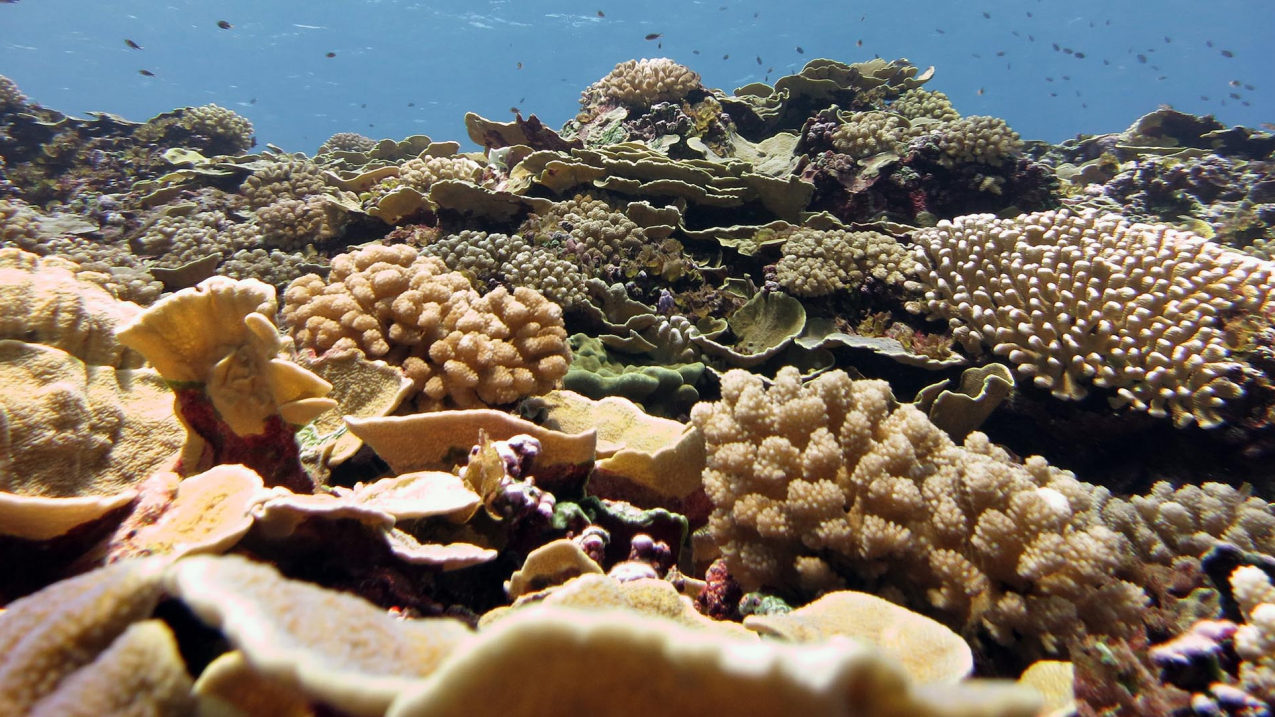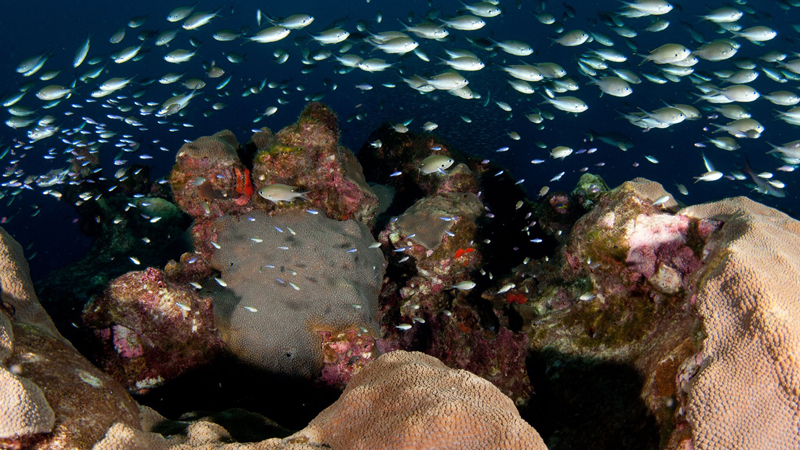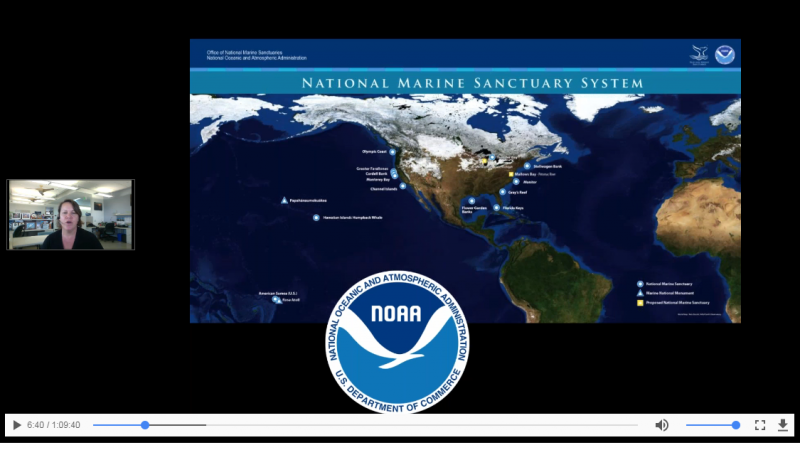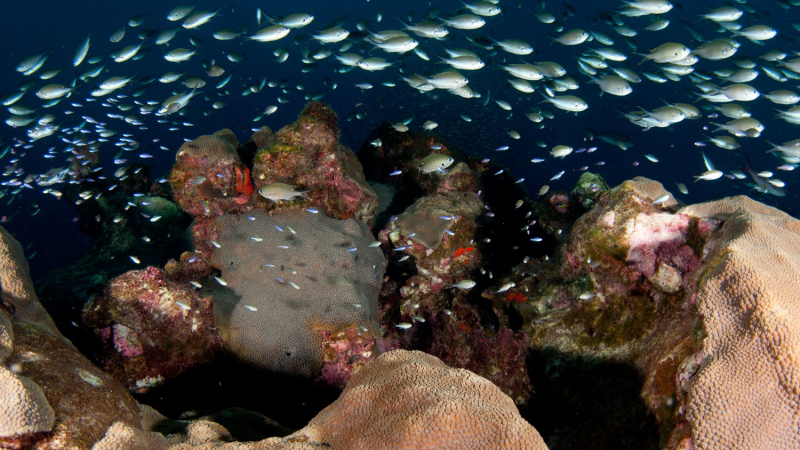The International Coral Reef Initiative declared 2018 the third International Year of the Reef. Whether you're on the coast or far inland, NOAA has resources to help you embrace this opportunity to teach about coral reefs and our global ocean.

The forereef benthic community at Swains Island in American Samoa is dominated by an assemblage of plating Montipora and branching cauliflower coral (Pocillopora meandrina). (Image credit: NOAA)
NOAA is an International Year of the Reef partner. Here are some ideas to help you introduce your students to these fascinating, diverse, and threatened ecosystems.
1. Use NOAA's coral reef lesson plans, activities, and tutorials.

NOAA Coral Reef Conservation Program education resources
All ages: Whether you are a student working on a school project, a teacher looking for ways to incorporate lessons about coral reefs into your classroom, an informal educator looking for information and activities to include in coral-related outreach, or just someone wanting to learn more about coral, this website was designed with you in mind.
Flower Garden Banks National Marine Sanctuary education resources
All ages: Bring ocean learning to life in your classroom through curriculum, lessons, activities, posters and more, all focused on Flower Garden Banks National Marine Sanctuary off the coast of Texas. From science and math to geography and art, we've got something for every age level.
Coral Reef Watch Satellites and Bleaching Tutorial
Grades 9 - 12: Let your students be the scientists! These modules allow your class to take on the role of the coral expert, exploring the satellite tools commonly used to monitor reef health.
Deep Coral Communities: Sentinels of a Changing Ocean curriculum
Grades 9 - 12: This curriculum from NOAA's Office of National Marine Sanctuaries takes students into the deep sea to identify the soft corals, hard corals, invertebrates, and fish found in these communities and to investigate their unique life histories.
2. Brush up on reef research with our webinars for educators.

What is Coral Bleaching?
Presented by Kelly Drinnen of NOAA’s Flower Garden Banks National Marine Sanctuary, located off the coast of Texas.
Deep Sea Science in the Classroom: Exploring Coral Communities of the West Coast National Marine Sanctuaries
Presented by Rietta Hohman of NOAA’s Greater Farallones National Marine Sanctuary, located off the coast of northern California.
3. Take a virtual field trip to an underwater reef.

Let your computer become a window into another world. While you might not be able to trek your class out to explore coral reefs in American Samoa, Grays Reef, or the Florida Keys, you can immerse your students in underwater ecosystems with the Office of National Marine Sanctuaries virtual dive gallery.
4. Share coral videos with your students.

Coral Comeback?
Dive into this multi-part video series from NOAA Ocean Today about coral reefs, the threats they face, and the solutions that are helping them make a comeback.
The Coral Reef Economy
This animated video from the Coral Reef Conservation Program gets viewers acquainted with the economic value of coral reefs in under two minutes.
Climate, reefs and resilience
Climate change — which can result in coral bleaching events, slower growth and reproduction rates, and degraded reef structure — is the most pressing global threat to coral reefs. Learn more from NOAA's Coral Reef Conservation Program.
Medicines of the Sea
When you have a bacterial infection like pink eye or strep throat, your doctor will usually write a prescription for antibiotics to make you feel better. But have you ever wondered where these medicines come from? Find out in this video from NOAA Ocean Today.
Coral Forests of the Deep
Most corals were once thought to live in tropical water, close enough to the surface to receive sunlight. But with the help of underwater vessels, scientists have discovered vast forests of corals living up to nearly two miles deep in dark, cold waters. Learn more from NOAA Ocean Today.
Restoring Coral Reefs
Our planet’s beautiful coral reefs are in serious trouble. They are being damaged or destroyed by pollution, disease, climate change, and a large number of ship groundings. NOAA Ocean Today explores how scientists are helping them recover.
Lionfish on the Loose
Whether on land or in the water, invasive species upset the fragile balance of an ecosystem, putting native species at risk. By educating the public about lionfish, marine biologists hope to prevent future invasions. Learn more from NOAA Ocean Today.
Coral Spawning
Corals are a beautiful and important part of our ocean. But if they can’t move around the ocean floor, how, exactly, do they find mates? Learn more from NOAA Ocean Today.
Coral Spawning and More
It’s not just corals that spawn in such a visual way. Christmas tree worms, sponges, and brittle stars all have their own intriguing displays of procreation in Flower Garden Banks National Marine Sanctuary off the coast of Texas.



